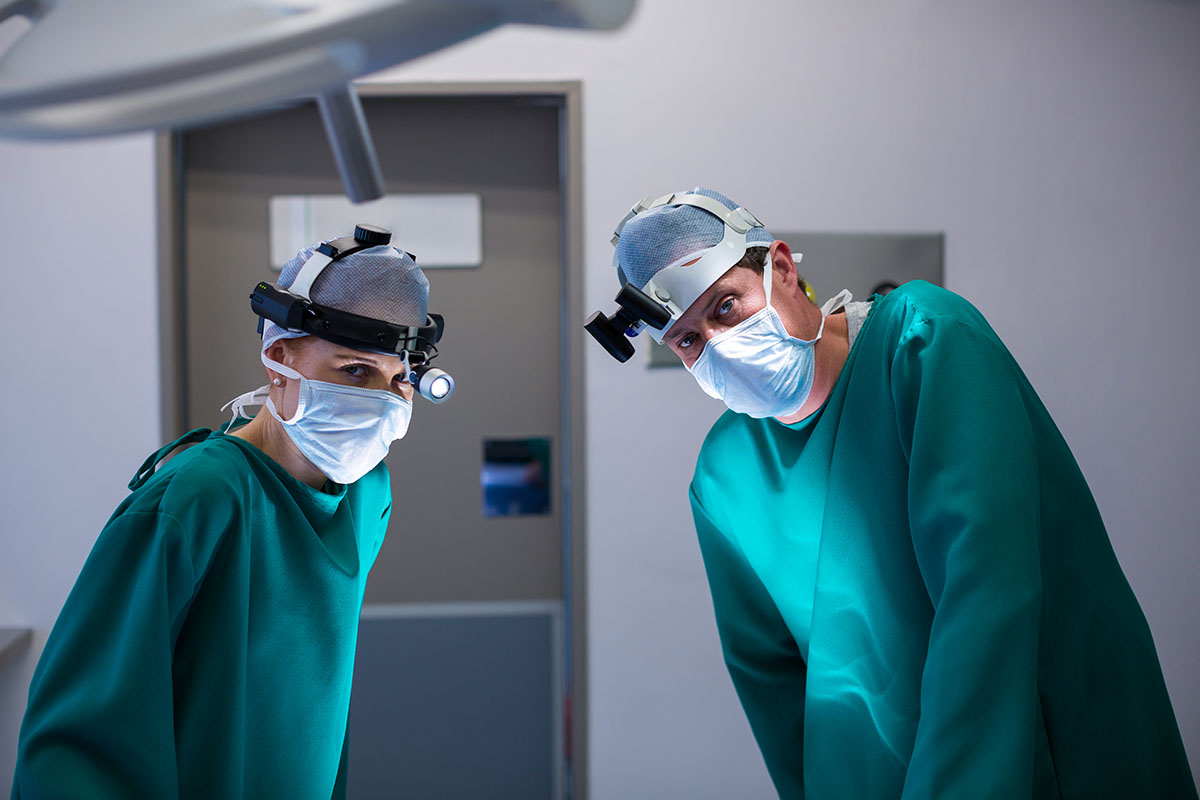Augmented reality is already improving healthcare.
The field of healthcare has rapidly embraced augmented reality (AR). In 2020, medical professionals used an AR head-mounted display to perform the first-ever spine surgery. A 78-year-old patient needed many screws inserted and lumbar decompression due to degenerative spine disease. The FDA-approved augmented reality headgear allowed surgeons to see the patient’s CT image while performing 100% accurate surgery and implant placement.

Hundreds of surgeries have been performed with AR by neurosurgeons since then. There have even been rumors that AR might be used for any type of surgery. Using AR glasses or other headgear, patients and healthcare practitioners can see information as it’s applied in real-life healthcare scenarios, in contrast to VR technology, which superimposes computer visuals in the real environment. Increased effectiveness, precision, customization, and overall better (and safer) treatment are made possible by this.
The delivery of healthcare is already being revolutionized by augmented reality and artificial intelligence (AI), from the operating room to the doctor’s office to medical school.
AR Surgery

Wearing augmented reality (AR) headsets, surgeons can view information, including patient imagery, while doing their vital tasks. Surgeons and their AR/AI solutions can look inside a patient with the use of cameras and AI software. They can also process large volumes of data to interpret the information and provide real-time diagnoses or procedure recommendations directly into the AR headset.
Medical Visualization

Furthermore, producers of solutions have created augmented reality (AR) systems that let medical professionals superimpose images on patients to help give safer care outside of the operating room. Nursing personnel, for instance, can more quickly and easily identify the correct vein when giving medication by viewing an overlay of the body’s venous system. This eliminates the sometimes uncomfortable process of trial and error.
Patient Education

Patients may find healthcare, particularly surgery, to be unsettling. Physicians can use augmented reality (AR) to let patients see how their bodies function, how a specific ailment might affect their health, and even what will happen during surgery. By using AI, this kind of visualization may customize the experience for each patient by considering their unique health data.
Patient Diagnosis
Patients can have difficulty describing their symptoms, which causes delays in diagnosis and treatment. AR can be beneficial since symptoms are observable. Patients can more correctly convey their worries to doctors by using AR glasses to visualize diverse skin diseases in comparison to their own. Alternatively, they can simulate a variety of eye problems in augmented reality to help clinicians understand them.
Pain Management
Similar to VR, AR enables clinicians to direct and fully immerse patients in therapeutic situations. In order to assist patients unwind and manage their pain, the FDA has previously approved headset solutions based on cognitive behavioral therapy. In a similar vein, AR can reduce discomfort during physical therapy. Artificial intelligence (AI) can help customize pain treatment experiences when combined with information about the patient’s unique discomfort.
Immersive Training
Training is arguably where augmented reality is used in healthcare the most. In virtual settings that mimic the actual world, medical professionals and students can study the human body, practice procedures, comprehend novel approaches and solutions, and much more. AI assists in interpreting and informing those settings so that they can adapt to the behaviors of medical professionals and students. Additionally, because AR environments are digital, they may be shared with others. For example, students in a classroom can use AR glasses to see what a colleague is seeing on a screen.
The Vast Potential Of AR In Healthcare

We have only just begun to explore the potential of AR and AI in the healthcare industry. A new breed of online collaboration tools and AR headsets that allow doctors to discuss and even coach one another through a procedure even when they are physically separated by great distances are also added to the mix. AR and AI can be used by other healthcare-related businesses, such as genomics and pharmaceutical companies, to better visualize, analyze, find, and develop novel medications, viruses, and cures.
Of course, especially in the healthcare industry, change can be intimidating. It took some time for minimally invasive laparoscopy, a technique that allows a surgeon to enter the abdomen with a camera and a small incision, to be accepted as a safe, recommended approach.
Organizations can conduct extensive education and training to speed up the process of safe implementation and trust. For example, they can conduct small-scale pilot projects to acquaint medical staff with AR-supported tools and maintain a consistent presence in the rapidly developing AR industry to guarantee that solutions are as current as possible. By doing this, you can help employees or leadership overcome their fear of change and get a glimpse into the fascinating field of medicine that is being advanced by the newest and most potent technologies available.
The effects of AR and AI go far beyond clinics and hospitals; they are already proven to be secure and efficient. Additionally, AR gains from innovation just like other healthcare advancements.
Similar to how modern operating rooms’ larger, higher-resolution display panels enable doctors to see patient information in greater detail, augmented reality technology is also evolving to become more precise. More comfortable headsets provide a broader field of vision and more accurate medical images, allowing users to concentrate on providing high-quality care while taking in more information.
AR gives medical professionals more confidence and accuracy to do what they do best. Patients get safer, better treatment. As technology advances, we may all anticipate new perspectives on a healthy future.




